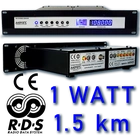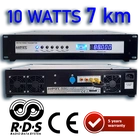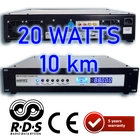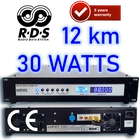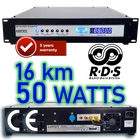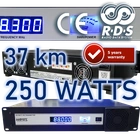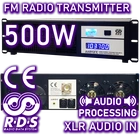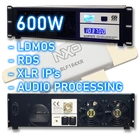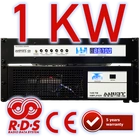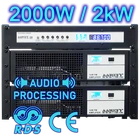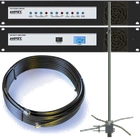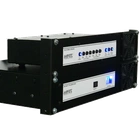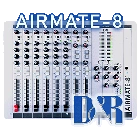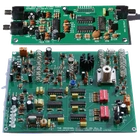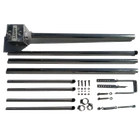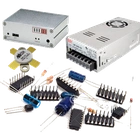What is the Range of an Radio Transmitter?

Hi there.
I'm Paul Hollings (LinkedIn profile) Head Engineer at Aareff Systems and I'm going try and explain how range and power works with radio transmitters.
It's always better and makes it easier to conceptualize in the mind if you think of the FM broadcast signal as going on and on forever even to the extremes of the universe. What determines the actual range are the obstructions that get in the way and block or limit the path of the signal. Think of it as 'What's going to block my signal?' and NOT 'How far will my signal go?'
Range and Distance are Attenuated By:
a) ANTENNA HEIGHT. The FM broadcast signal behaves a lot like visible light. Imagine a huge bright light in the same place your antennas are mounted, I mean a really bright light, like a football stadium flood light, beaming out to the horizon. In the dark you would be able to see this for tens of miles until it reached the limits of the horizon. This is exactly what the radio signal does, but the radio signal will generally go about 20 to 30% further than the light bending over the horizon a little. This is caused by a little bit of diffraction that occurs at VHF FM band frequencies.
b) INTERFERENCE. Other sources of interference from other stations and FM broadcasts operating on the same frequency. For example the antenna may be able to see 20 miles, but if another station's FM broadcast is on the same frequency 20 miles away, it will block/interfere with the signal.
c) RADIO TRANSMITTER POWER and antenna height, you can't have one without the other. You can have 30 miles of line of sight, but only 100mW, you will only transmit maybe 1/4 of mile. If you had 100W then because of the 30 miles line of sight the signal will be strong enough to overcome the background noise in the radio receiver all the way to the horizon. The 100W will reach the horizon without signal degradation. So the transmitter power ideally needs to be proportional to the distance of the horizon.
A typical example is:
Our 100 watt radio transmitter using a high gain antenna like the Aareff 5/8's vertical which has a gain of 4.8 dBi, and using 20mt of LMR400 low loss coax would effectively more than double the power to 250 Watts EIRP. (up to 24 miles range)
With 25 years of customer reports, a lot of testing on our part, in addition to the science and math behind this, we have been able to get some rough average rule of thumb numbers on range, they are as follows:
This table is based on maximum reports from customers mostly using house roofs or small towers.
|
Watts EIRP |
Range Miles |
Range Km |
|
1 2 4 8 16 32 64 128 256 512 |
1.5 2.1 3.0 4.2 6.0 8.6 12.0 17.0 24.0 34.0 |
2.2 3.1 4.5 6.3 9.0 12.9 18.0 25.5 36.0 51.0 |
EIRP ( Effective Isotropic Radiated Power )
This is the power radiated from the antenna. All antenna systems have a degree of power gain. When calculating the gain of a complete antenna system including the cable, the main factors are the amount of actual antenna gain ( dBi ) and the amount of loss ( dB ) through the antenna cable or coax. You can use our online dBi/dB loss and gain calculator here using your own values to calculate your EIRP. Also more info at Wikipedia EIRP
The four graphs below are based on average customer reports in some directions, but not all directions. Basically they show the maximum ranges really ever recorded for our 10kW, 25kW, 50kW and 100kW EIRP systems. Most of the reports were radio station listeners that phoned, texted, Whatsapp etc into the radio station programs operated by our customers.




Better Accuracy
If you need more precise results, well we can't get 100% accuracy, but we can get about 85%, which is much better than the 'rule of thumb' numbers shown above. We get 85% accuracy by using radar height data collected by NASAs space shuttle during it's operations about 15 years ago.
If you go to my personal site you can see some spectacular plots from all angles of the iHeartMedia 100kW ERP FM Services in Miami compared with the FCCs 60dBuV/m contour line.
For a small fee we can make plots like this for you, we just need to know the GPS coordinates of the antenna site, the the tower or structure height and your level of EIRP or ERP. If you like more details on this, message us at info@aareff.com or WS +1 829 698 0733

 +1 829 698 0733
What Do You Need? Talk To Us
+1 829 698 0733
What Do You Need? Talk To Us
